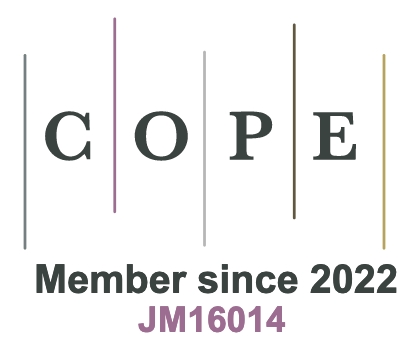REFERENCES
1. Langel, U.; Cravatt, B. F.; Graslund, A.; et al. Introduction to peptides and proteins. 1st Edition. CRC press: 2009.
2. Muttenthaler, M.; King, G. F.; Adams, D. J.; Alewood, P. F. Trends in peptide drug discovery. Nat. Rev. Drug. Discov. 2021, 20, 309-25.
3. Bhinder, B.; Gilvary, C.; Madhukar, N. S.; Elemento, O. Artificial intelligence in cancer research and precision medicine. Cancer. Discov. 2021, 11, 900-15.
4. Mohapatra, S.; Hartrampf, N.; Poskus, M.; Loas, A.; Gómez-Bombarelli, R.; Pentelute, B. L. Deep learning for prediction and optimization of fast-flow peptide synthesis. ACS. Cent. Sci. 2020, 6, 2277-86.
5. Tao, K.; Makam, P.; Aizen, R.; Gazit, E. Self-assembling peptide semiconductors. Science 2017, 358, eaam9756.
6. Kim, S. H.; Parquette, J. R. A model for the controlled assembly of semiconductor peptides. Nanoscale 2012, 4, 6940-7.
7. Yang, Y.; Wang, X.; Wu, X.; et al. Computation-driven rational design of self-assembled short peptides for catalytic hydrogen production. J. Am. Chem. Soc. 2024, 146, 13488-98.
8. Stone, E. A.; Hosseinzadeh, P.; Craven, T. W.; et al. Isolating conformers to assess dynamics of peptidic catalysts using computationally designed macrocyclic peptides. ACS. Catal. 2021, 11, 4395-400.
9. McDonald, E. F.; Jones, T.; Plate, L.; Meiler, J.; Gulsevin, A. Benchmarking AlphaFold2 on peptide structure prediction. Structure 2023, 31, 111-9.e2.
10. Lei, Y.; Li, S.; Liu, Z.; et al. A deep-learning framework for multi-level peptide-protein interaction prediction. Nat. Commun. 2021, 12, 5465.
11. Batra, R.; Loeffler, T. D.; Chan, H.; et al. Machine learning overcomes human bias in the discovery of self-assembling peptides. Nat. Chem. 2022, 14, 1427-35.
12. Bhadra, P.; Yan, J.; Li, J.; Fong, S.; Siu, S. W. I. AmPEP: sequence-based prediction of antimicrobial peptides using distribution patterns of amino acid properties and random forest. Sci. Rep. 2018, 8, 1697.
13. Veltri, D.; Kamath, U.; Shehu, A. Deep learning improves antimicrobial peptide recognition. Bioinformatics 2018, 34, 2740-7.
14. Hellinger, R.; Sigurdsson, A.; Wu, W.; et al. Peptidomics. Nat. Rev. Methods. Primers. 2023, 3, 25.
15. Seebach, D.; Hook, D. F.; Glättli, A. Helices and other secondary structures of beta- and gamma-peptides. Biopolymers 2006, 84, 23-37.
16. Mittal, J.; Yoo, T. H.; Georgiou, G.; Truskett, T. M. Structural ensemble of an intrinsically disordered polypeptide. J. Phys. Chem. B. 2013, 117, 118-24.
17. Hearst, M.; Dumais, S.; Osuna, E.; Platt, J.; Scholkopf, B. Support vector machines. IEEE. Intell. Syst. Their. Appl. 1998, 13, 18-28.
19. Murtagh, F. Multilayer perceptrons for classification and regression. Neurocomputing 1991, 2, 183-97.
20. Almagro, A. J. J.; Salvatore, M.; Emanuelsson, O.; et al. Detecting sequence signals in targeting peptides using deep learning. Life. Sci. Alliance. 2019, 2, e201900429.
21. Medsker, L.; Jain, L. C. Recurrent neural networks: design and applications. 1st Edition. CRC Press: 1999.
23. Vaswani, A.; Shazeer, N.; Parmar, N. Attention is all you need. arXiv2017, arXiv:1706.03762. Available online: https://arxiv.org/abs/1706.03762. (accessed 21 Feb 2025)
24. Charoenkwan, P.; Nantasenamat, C.; Hasan, M. M.; Manavalan, B.; Shoombuatong, W. BERT4Bitter: a bidirectional encoder representations from transformers (BERT)-based model for improving the prediction of bitter peptides. Bioinformatics 2021, 37, 2556-62.
25. Chu, Y.; Zhang, Y.; Wang, Q.; et al. A transformer-based model to predict peptide–HLA class I binding and optimize mutated peptides for vaccine design. Nat. Mach. Intell. 2022, 4, 300-11.
26. Wang, J.; Li, C.; Shin, S.; Qi, H. Accelerated atomic data production in ab initio molecular dynamics with recurrent neural network for materials research. J. Phys. Chem. C. 2020, 124, 14838-46.
27. Bronstein, M. M.; Bruna, J.; Lecun, Y.; Szlam, A.; Vandergheynst, P. Geometric deep learning: going beyond euclidean data. IEEE. Signal. Process. Mag. 2017, 34, 18-42.
28. Wu, Z.; Pan, S.; Chen, F.; Long, G.; Zhang, C.; Yu, P. S. A comprehensive survey on graph neural networks. IEEE. Trans. Neural. Netw. Learn. Syst. 2021, 32, 4-24.
29. Yan, K.; Lv, H.; Guo, Y.; Peng, W.; Liu, B. sAMPpred-GAT: prediction of antimicrobial peptide by graph attention network and predicted peptide structure. Bioinformatics 2023, 39, btac715.
30. Wei, L.; Ye, X.; Xue, Y.; Sakurai, T.; Wei, L. ATSE: a peptide toxicity predictor by exploiting structural and evolutionary information based on graph neural network and attention mechanism. Brief. Bioinform. 2021, 22, bbab041.
31. Boadu, F.; Cao, H.; Cheng, J. Combining protein sequences and structures with transformers and equivariant graph neural networks to predict protein function. Bioinformatics 2023, 39, i318-25.
32. Zhao, A.; Chen, Z.; Fang, Z.; Zhang, X.; Li, J. Dual-modality representation learning for molecular property prediction. arXiv2025, arXiv:2501.06608. Available online: https://doi.org/10.48550/arXiv.2501.06608. (accessed 21 Feb 2025)
33. McCloskey, K.; Taly, A.; Monti, F.; Brenner, M. P.; Colwell, L. J. Using attribution to decode binding mechanism in neural network models for chemistry. Proc. Natl. Acad. Sci. U. S. A. 2019, 116, 11624-9.
34. Wang, J.; Liu, Z.; Zhao, S.; et al. Deep learning empowers the discovery of self-assembling peptides with over 10 trillion sequences. Adv. Sci. 2023, 10, e2301544.
35. Liu, Z.; Wang, J.; Luo, Y.; Zhao, S.; Li, W.; Li, S. Z. Efficient prediction of peptide self-assembly through sequential and graphical encoding. Brief. Bioinform. 2023, 24, bbad409.
36. Xu, T.; Wang, J.; Zhao, S.; et al. Accelerating the prediction and discovery of peptide hydrogels with human-in-the-loop. Nat. Commun. 2023, 14, 3880.
37. Wang, J.; Liu, Z.; Zhao, S.; et al. Aggregation Rules of Short Peptides. JACS. Au. 2024, 4, 3567-80.
38. Marler, R. T.; Arora, J. S. The weighted sum method for multi-objective optimization: new insights. Struct. Multidisc. Optim. 2010, 41, 853-62.
39. Shang, W.; Sohn, K.; Almeida, D.; Lee, H. Understanding and improving convolutional neural networks via concatenated rectified linear units. arXiv2016, arXiv:1603.05201. Available online: https://doi.org/10.48550/arXiv.1603.05201. (accessed 21 Feb 2025)
40. Gao, Y.; Beijbom, O.; Zhang, N.; Darrell, T. Compact bilinear pooling. In 2016 IEEE Conference on Computer Vision and Pattern Recognition (CVPR), Las Vegas, USA, Jun 27-30, 2016; IEEE, 2016; pp. 317-26.
41. Marrink, S. J.; Risselada, H. J.; Yefimov, S.; Tieleman, D. P.; de, V. A. H. The MARTINI force field: coarse grained model for biomolecular simulations. J. Phys. Chem. B. 2007, 111, 7812-24.
42. Monticelli, L.; Kandasamy, S. K.; Periole, X.; Larson, R. G.; Tieleman, D. P.; Marrink, S. J. The MARTINI coarse-grained force field: extension to proteins. J. Chem. Theory. Comput. 2008, 4, 819-34.
43. Brooks, B. R.; Brooks, C. L.; Mackerell, A. D. J. et al. CHARMM: the biomolecular simulation program. J. Comput. Chem. 2009, 30, 1545-614.
44. Brooks, B. R.; Bruccoleri, R. E.; Olafson, B. D.; States, D. J.; Swaminathan, S.; Karplus, M. CHARMM: a program for macromolecular energy, minimization, and dynamics calculations. J. Comput. Chem. 1983, 4, 187-217.
45. Sundararajan, M.; Taly, A.; Yan, Q. Axiomatic attribution for deep networks. arXiv2017, arXiv:1703.01365. Available online: https://doi.org/10.48550/arXiv.1703.01365. (accessed 21 Feb 2025)
46. Meier, F.; Geyer, P. E.; Virreira, W. S.; Cox, J.; Mann, M. BoxCar acquisition method enables single-shot proteomics at a depth of 10,000 proteins in 100 minutes. Nat. Methods. 2018, 15, 440-8.
47. Liu, F.; Baggerman, G.; Schoofs, L.; Wets, G. The construction of a bioactive peptide database in Metazoa. J. Proteome. Res. 2008, 7, 4119-31.
48. Jiang, W. Graph-based deep learning for communication networks: a survey. Comput. Commun. 2022, 185, 40-54.
49. Veličković, P.; Cucurull, G.; Casanova, A.; Romero, A.; Liò, P.; Bengio, Y. Graph attention networks. arXiv2017, arXiv:1710.10903. Available online: https://doi.org/10.48550/arXiv.1710.10903. (accessed 21 Feb 2025)
50. Hamilton, W. L.; Ying, R.; Leskovec, J. Inductive representation learning on large graphs. arXiv 2017, arXiv:1706.02216. Available online: https://doi.org/10.48550/arXiv.1706.02216. (accessed 21 Feb 2025)








